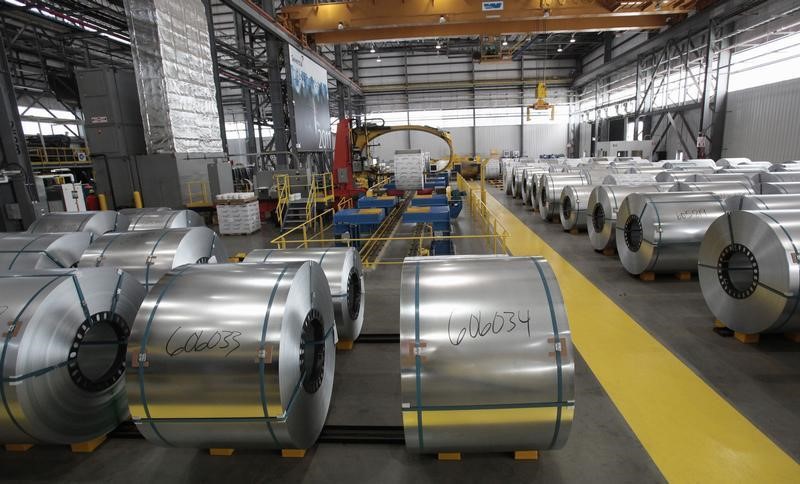By Lucia Mutikani
WASHINGTON (Reuters) - U.S. producer prices recorded their biggest drop in more than five years in January as the cost of energy and a range of other goods tumbled, hinting at a disinflationary trend that could argue against the Federal Reserve raising interest rates.
Signs of moderate economic growth early in the first quarter could make policy decisions at the Fed difficult. Other reports on Wednesday showed housing starts fell last month, while manufacturing output rose marginally. "That, along with persistently cool measures on inflation, will complicate decisions on the timing of a rate hike by the Fed. There is a clear consensus to obtain a liftoff this year, but the timing is still cloudy," said Diane Swonk, chief economist at Mesirow Financial in Chicago.
The Labor Department said its producer price index for final demand fell 0.8 percent, the biggest drop since the revamped series started in November 2009, after dipping 0.2 percent in December. It was the third straight month of decline in the PPI.
In the 12 months through January, producer prices were unchanged, the weakest year-on-year reading since records started in November 2010, after rising 1.1 percent in December.
Economists had forecast the PPI declining only 0.4 percent last month and gaining 0.3 percent from a year ago.
The decline in producer prices spilled over to the so-called core PPI as a strengthening dollar dampens imported inflation.
A key measure of underlying producer price pressures, which excludes food, energy and trade services, fell a record 0.3 percent last month after edging up 0.1 percent in December.
While the Fed, which has a 2 percent inflation target, views the tame price environment as transitory, the broad-based weakness could cause discomfort among some policymakers.
"If we continue to see core prices disinflating at the current pace ... it will likely still the Fed's hand in terms of the timing of the rate hike," said Millan Mulraine, deputy chief economist at TD Securities in New York.
"As much as they see the weakness as temporary, it would not be favorable for them to be tightening at a time when core inflation is moving further away from the target."
Most economists expect the U.S. central bank to start raising interest rates in June, citing rapidly tightening labor market conditions. The Fed has kept its short-term interest rate near zero since December 2008.
U.S. Treasury debt prices rose on the data. U.S. stocks were trading lower after recent gains, while the dollar rose against a basket of currencies.
STRONG DOLLAR
In a separate report, the Fed said manufacturing output rose 0.2 percent last month after being flat in December. Economists say slowing global growth, a strong dollar and lower crude oil prices are curbing factory activity.
An on-going labor dispute at key ports on the West Coast, which has caused delays in shipments, has also been blamed.
"Going forward, expect domestic producers to be more cautionary in expanding capacity as they wait to see where oil prices and the dollar will stabilize," said Jay Morelock, an economist at FTN Financial in New York.
Wholesale energy prices tumbled a record 10.3 percent in January after sliding 6.2 percent in December. It was the seventh straight month of declines. Weak global demand and increased shale production in the United States have created an oil glut, undercutting prices.
Food prices posted their biggest decline since April 2013. There were huge declines in the wholesale prices of chemicals, and for services such as radio advertising, securities brokerage and television advertising.
The volatile trade services component, which reflects profit margins, rose 0.5 percent after a similar gain in December.
In a separate report, the Commerce Department said housing starts fell 2.0 percent to a seasonally adjusted annual pace of 1.07 million units in January.
Despite the decline, which was driven by a fall in groundbreaking for single-family projects, starts remained above the one million-unit mark for a fifth straight month.
Housing is expected to accelerate this year as a rapidly tightening labor market pushes up wages and encourages more young adults to move out of their parents' basements and set up their own homes.
Already in the fourth quarter, household formation was accelerating, breaking above the one-million mark that usually is associated with a fairly healthy housing market.

Homebuilders such as DR Horton (N:DHI), Lennar Corp (N:LEN) and Pulte Group (N:PHM) are likely to benefit from the anticipated pick-up in starts this year.